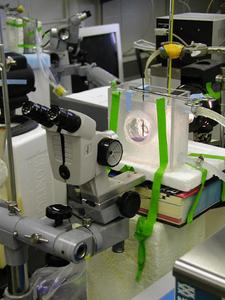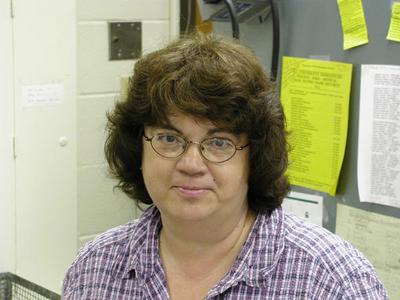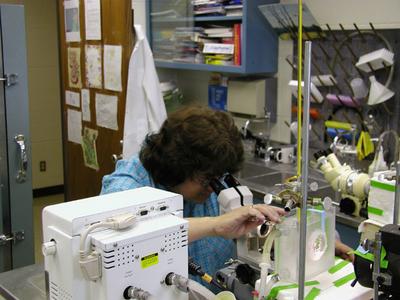18 June, 2002
6/18/02
Notre Dame.
The second phase of my research experience began with my arrival in South
Bend, Indiana and at the campus of Notre Dame University. I drove up from
Cincinnati yesterday afternoon and while the drive was far, far more pleasant
than driving the Haul Road in Alaska, I did encounter….Kokomo. I believe that
it took me nearly 20 minutes to drive the few miles on Route 31 through
Kokomo. It seems to be a town of endless stoplights and a single perpetual
strip mall. I have been advised by all the local residents to make my trip
through Kokomo either at night when there is little traffic or at lunchtime
when I can break up the trip through town with a stop for lunch at one the
multitude of places to eat in town.
Upon my arrival in South Bend, I checked into the hotel and made my way over
to the campus of Notre Dame. There is an air to many college campuses that is
like no other place in the world. As one walks through campus surrounded by
ivy covered buildings and students, there is a feeling of reverence that
exists only at institutions of higher learning. What amazes me is how much
more of that feeling you get at some campuses verses others. Notre Dame has
that feeling as does Miami University in Oxford back at home. Dartmouth in
Hanover, New Hampshire last summer had it as did my alma mater, the
University of Illinois. It must have something to do with the personality of
each campus. Whatever it is, I welcome that feeling of being in someplace a
little step above the average locale.
This morning, I sat with Dr. Jack Duman to discuss the plan for the next two
weeks. What do we hope to accomplish and how well do those goals fit with the
needs of the TEA program. As I am here to help as well as bring the
experience back to my students and my community, we set a twofold plan to
work on the insects and the data we collected in Alaska and to make an effort
to develop some type of lab exercises or lessons that I can use in the high
school classroom. The research certainly lends itself to a number of
possibilities for a high school classroom.
After lunch at a campus cafe, I settled in to examining some of the samples
we collected at the Toolik station in Alaska. The carabid beetles we found on
a tundra hillside needed to be checked for AFP (antifreeze protein) activity.
This procedure involves watching a sample of hemolymph (insect blood) while
it freezes and melts in a supercooled bath. Samples that show AFP activity
will have a difference between their freezing point and their melting point.
To show that difference, we change the temperature of the bath very slowly
while watching for signs of crystal growth and/or crystal melting in the
sample. I would really like to show you what the process looks like in the
microscope, but I haven't figured out a way to hook a camera up to the
microscope yet. I'll be working on that during the week. Our results today
showed a very small amount of AFP activity in the beetles. This turns out to
be somewhat significant since no other beetles of this species have shown
activity in the past. This result also shows one of the difficulties in this
field of research in that only a relatively small number of insects have ever
been tested for their tolerance to freezing conditions. There are thousands
and thousands of insect species in the world and the testing for these
proteins has really only just begun.

This is the microscope and cooling setup used to measure freezing and melting points of hemolymph.

Meet Sandy Sass. Sandy has been a lab technician at Notre Dame for 22 years, working with Dr. Jack Duman for the last 16.

Sandy Sass determining the freezing and melting points of a hemolymph sample.
Contact the TEA in the field at
.
If you cannot connect through your browser, copy the
TEA's e-mail address in the "To:" line of
your favorite e-mail package.
|
